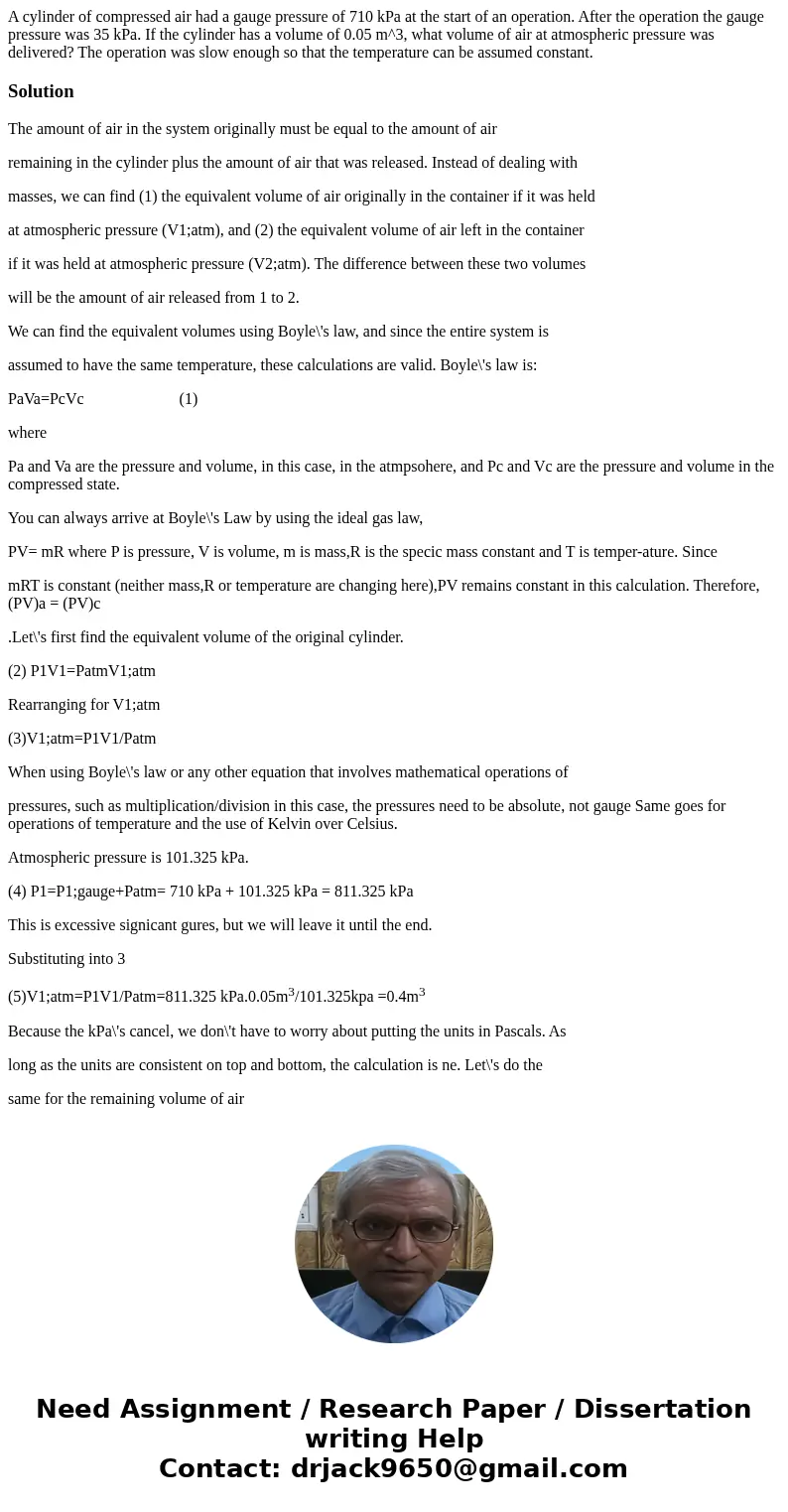A cylinder of compressed air had a gauge pressure of 710 kPa
Solution
The amount of air in the system originally must be equal to the amount of air
remaining in the cylinder plus the amount of air that was released. Instead of dealing with
masses, we can find (1) the equivalent volume of air originally in the container if it was held
at atmospheric pressure (V1;atm), and (2) the equivalent volume of air left in the container
if it was held at atmospheric pressure (V2;atm). The difference between these two volumes
will be the amount of air released from 1 to 2.
We can find the equivalent volumes using Boyle\'s law, and since the entire system is
assumed to have the same temperature, these calculations are valid. Boyle\'s law is:
PaVa=PcVc (1)
where
Pa and Va are the pressure and volume, in this case, in the atmpsohere, and Pc and Vc are the pressure and volume in the compressed state.
You can always arrive at Boyle\'s Law by using the ideal gas law,
PV= mR where P is pressure, V is volume, m is mass,R is the specic mass constant and T is temper-ature. Since
mRT is constant (neither mass,R or temperature are changing here),PV remains constant in this calculation. Therefore, (PV)a = (PV)c
.Let\'s first find the equivalent volume of the original cylinder.
(2) P1V1=PatmV1;atm
Rearranging for V1;atm
(3)V1;atm=P1V1/Patm
When using Boyle\'s law or any other equation that involves mathematical operations of
pressures, such as multiplication/division in this case, the pressures need to be absolute, not gauge Same goes for operations of temperature and the use of Kelvin over Celsius.
Atmospheric pressure is 101.325 kPa.
(4) P1=P1;gauge+Patm= 710 kPa + 101.325 kPa = 811.325 kPa
This is excessive signicant gures, but we will leave it until the end.
Substituting into 3
(5)V1;atm=P1V1/Patm=811.325 kPa.0.05m3/101.325kpa =0.4m3
Because the kPa\'s cancel, we don\'t have to worry about putting the units in Pascals. As
long as the units are consistent on top and bottom, the calculation is ne. Let\'s do the
same for the remaining volume of air
(6) P2=P2;gauge+Patm= 35 kPa + 101.325 kPa = 136.325 kPa
Substituting into the equivalent of equation 3
(7)V2;atm=P2V2/Patm=34.325 kPa.0.05m3/101.325kpa =0.067m3
the difference between these two is the volume of air released at atmospheric pressure.
Vreleased;atm=V1;atm-V2;atm=0.4-0.067=0.333m3


 Homework Sourse
Homework Sourse